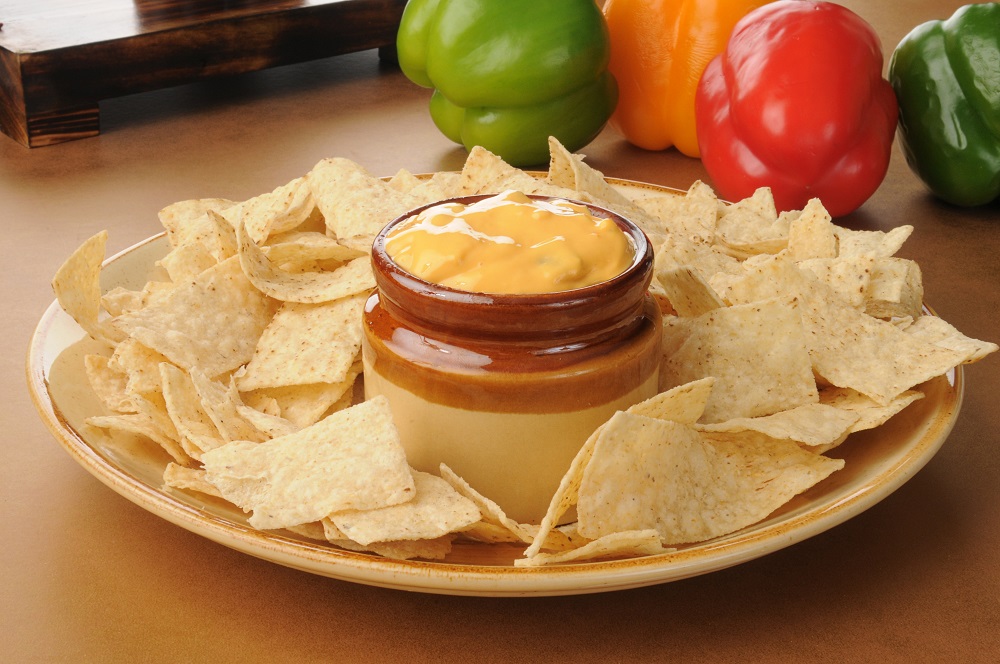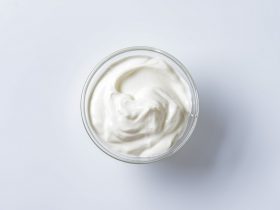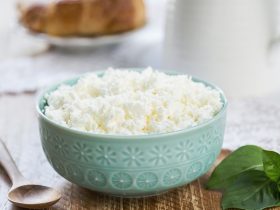Queso can mean different things, including dips, sauces or fresh cheese. Given that there are different do’s and don’ts when it comes to eating cheese during pregnancy, let us find out which kind of queso is safe and unsafe to consume when you are pregnant.
Queso fresco, queso blanco and queso dips can be safe for consumption during pregnancy, as long as they were made with pasteurized milk. However, this does not completely eliminate the risk of listeriosis because Listeria contamination can happen after pasteurization.
Jesmarie Macapagal, RN, MD, DPPS
What are the Different Queso Cheeses?
There are two main types of queso: Queso fresco and queso blanco. There are also different types of queso-style dips like chile con queso.
Queso Fresco and Queso Blanco
Queso translates literally to “cheese” in Spanish, while queso fresco means “fresh cheese” and queso blanco translates into “white cheese” in English. Both queso fresco and queso blanco are a Mexican type of fresh white cheese that are traditionally made from raw cow’s milk, goat’s milk, or a combination of both. It has a slightly salty and sour, with mildly milky, taste. In the United States, pasteurized queso fresco products are commonly sold in supermarkets, but a lot of people also choose to make their own queso fresco at home.
Although traditionally, queso fresco is made with the use of rennet as an acid (Flynn et al., 2021), while queso blanco is made with vinegar or lemon juice for curdling the milk, nowadays the names queso fresco and queso blanco are often used interchangeably. When the curds form, the whey is strained in cheesecloth and the curds are pressed into a firm cheese or turned into a creamy, spreadable form.
The crumbly texture of queso fresco is ideal for use as a topping. It is often used as a substitute for feta, goat or ricotta cheese. It can be sprinkled on enchiladas, tacos, salads, soups and egg dishes (like huevos rancheros). It also works great with fresh fruits and herbs, grilled food, summer vegetables, or as a filling in some recipes like the chile rellenos.
Queso Dips

“Chile con queso” means “chile with cheese” in English. It is a Tex-Mex (Texan-Mexican) cheese dip that is a Mexican-inspired American dish of thick and creamy melted cheese that is popularly served as an appetizer or side dish.
Traditional or classic queso is made of melted Velveeta cheese, diced tomatoes and green chiles. But recipes today can vary extensively. Nowadays, there is orange queso and white queso, depending on the cheese used. It can also be made into a thinner consistency with the use of white cheddar or Monterey Jack cheese. Other recipes can also use yellow or aged cheddar cheese.
The ingredients used in making queso dips also vary. Some contain green chiles, jalapenos, or both. Queso can also be spiced with cumin or chili powder. Still others add meat, such as ground beef or spicy sausage, to the melted cheese. Lastly, queso makers can mix and match their own recipes from any of the ingredients mentioned above, and they can even add their own twist.
Risks of Eating Queso During Pregnancy
Latin-style soft cheeses like queso fresco are typically fresh (not aged), have a short shelf-life of about 2 weeks, and have a high moisture content up to 59 percent. These characteristics all contribute to increased risk of pathogen growth that may cause disease to humans (Lusk et al., 2012).
From 1998 to 2011, 90 outbreaks that were linked to cheese consumption have been reported to the Centers for Disease Control and Prevention (CDC). Of these outbreaks, 42 percent were attributed to ingestion of cheese made with unpasteurized milk, 49 percent were from cheese made with pasteurized milk, while 9 percent were cheese with no report of pasteurization status (Gould et al., 2014).
Queso fresco was the most common cheese reported, with 18 outbreaks due to unpasteurized and 1 outbreak due to pasteurized cheese. Majority of the outbreaks that were caused by pasteurized cheeses occurred most commonly in restaurants, delis, or banquet settings, where cross-contamination was the implicated contributing factor (Gould et al., 2014).
Raw milk can be contaminated by pathogens that are present in animals or the environment. Pasteurization is known to be effective in eradicating these organisms from milk. However, cheese can become contaminated after pasteurization during the subsequent cheese-making process through contact with contaminated equipment or handling by infected workers (Gould et al., 2014).
Salmonella
The most common cause of the outbreaks related to cheese consumption reported between 1998 and 2011 were related to Salmonella contamination of unpasteurized (10 outbreaks) and pasteurized (6 outbreaks) queso fresco or other Mexican-style cheese (Gould et al., 2014).
In 2019, Plumb et al. described the investigation conducted by the CDC, state and local health departments and the US Department of Agriculture’s Food Safety and Inspection Service on a multistate Salmonella outbreak that happened during June 2018 to March 2019. 255 cases in 32 states were identified in this outbreak. Infections were found to be caused by consumption of soft cheese and queso fresco obtained in Mexico and beef obtained in the United States.
Brucella
Brucella species cause the infection called brucellosis. It is an endemic zoonotic disease that causes up to approximately 500 thousand cases worldwide. However, in the United States, it is considered a rare illness with only about 100 to 200 cases reported every year (Pappas et al., 2006). The most common route of transmission of Brucella species to humans has been found to be the ingestion of unpasteurized dairy products (Mantur et al., 2007).
In 2013, Román et al. described an outbreak of brucellosis at a police station in Peru. Of 60 officers at the station, 16 were identified to have the disease. A local Peruvian cuisine that was prepared with unpasteurized goat white cheese was implicated as the most probable source of infection.
In 2021, Krause et al. reported a case of brucellosis from consumption of queso fresco. The case was that of a male who was 22 years old and regularly consumed queso fresco from Mexico. He developed low back pain, fever, chills and weight loss, and was initially managed for osteomyelitis, but was later diagnosed as a case of lumbar and sacral brucellosis.
Listeria
Listeria monocytogenes is a ubiquitous pathogen found in the environment. It is a particular concern in ready to eat (RTE) dairy products like fresh cheese (Boor et al., 2017), and has caused several outbreaks of food borne disease. It causes the infection called listeriosis, which has a high overall mortality rate, ranging from 20 to 30 percent, mainly among pregnant women, their babies, and immunocompromised individuals (Hernandez-Milian & Payeras-Cifre, 2014).
According to the CDC, pregnant women are 10 times more likely to get listeriosis, compared to the general population. However, pregnant Hispanic women were found to have even greater risk and are 24 times more likely to get Listeria infection than the general population.
Listeriosis can be transmitted across the placenta and affect the fetus or newborn (Lamont et al., 2011). It is a severe food borne illness that can result in serious complications, such as miscarriage, premature birth, maternal and neonatal sepsis, and death in the newborn (Moran et al., 2018).
Queso fresco is now the most popular Hispanic-inspired fresh cheese in the market. It has a high moisture content, low salt content and almost neutral pH, which make it susceptible for contamination with L. monocytogenes (Flynn et al., 2021). This bacterium is able to grow at refrigeration temperatures and can contaminate products after the pasteurization process (Flynn et al., 2021). Hence, soft cheeses can encourage the growth of Listeria, regardless if the milk used to make the cheese was pasteurized or not (D’Amico et al., 2008)
The most serious outbreak of listeriosis involving Latin-style cheeses happened in 1985, which caused 48 deaths, of which 30 were newborns and fetuses (Lusk et al., 2012). In 2000, an outbreak of listeriosis among Hispanic people in North Carolina was identified to be caused by noncommercial, fresh, Mexican-style cheese, including queso fresco, made from contaminated raw milk. Of the 11 cases who were pregnant at the time, 5 resulted in stillbirth, 3 had premature deliveries, and 3 gave birth to infected newborns (MacDonald et al., 2005).
In 2006, Uhlich et al. investigated the growth of Listeria monocytogenes in vacuum-packaged slices of queso blanco. This study found that Listeria was able to grow during storage at refrigeration temperatures, and not even the lowest temperature of 5 degrees Celsius was able to prevent its growth.
According to the CDC, 8 food borne outbreaks have been associated with Listeria contamination in cheese from 2014 to 2018. The cheese products implicated in these outbreaks include quesarito (fresh cheese), soft raw milk cheese, and queso fresco. Moreover, according to the National Outbreak Reporting System (NORS), 5 outbreaks, 46 illnesses, 34 hospitalizations, and 2 deaths have been associated with ingestion of contaminated queso fresco in the United States from 1971 to 2018 (Flynn et al., 2021).
Recommendations for Eating Queso During Pregnancy
According to the CDC, pregnant women can lower their risk of getting listeriosis by not eating soft cheeses, including queso fresco, unless they were made with pasteurized milk. Pasteurization is the process of heating milk long enough and to a temperature high enough to kill harmful bacteria like Listeria. However, even soft cheeses made from pasteurized milk have been reported to cause listeriosis.
Pregnant women, who are at higher risk for listeriosis, should remember that soft cheeses made with raw milk, or even those made with pasteurized milk but under unsanitary conditions, have been reported to cause severe illness (Gould et al., 2014). These soft cheeses include queso fresco (CDC, 2013).
Majority of the queso served in American-Mexican restaurants are pasteurized. But because Mexican queso is traditionally made with raw milk, it would be prudent to ask the ingredients to be sure. Pregnant women can also reheat their fresh queso and queso dip to kill any bacteria that may be present. When in doubt, it is best to avoid ordering and eating queso dishes.
Other public health agencies, such as the European Centre for Disease Control and Prevention and the Public Health Agency of Canada, recommend that all persons considered as high-risk of developing listeriosis should avoid consumption of all soft cheeses (Gould et al., 2014).
Final Thoughts
Consuming only pasteurized queso fresco, queso blanco and queso dips can lower the risk of listeriosis during pregnancy. Just make sure to read the label carefully when shopping at groceries, or ask questions in restaurants or farmer’s markets when you feel doubtful about the cheese’s pasteurization status.
Stay clear from queso made with raw milk as there is a high risk of contamination with Listeria, which can be very dangerous for unborn babies. Then again, even pasteurized products of queso can still be contaminated if they were processed under unsanitary conditions. The only way to eliminate this risk a hundred percent is to stay clear from eating any queso dish throughout pregnancy.
Remember that it is not worth risking the life of your baby for some food craving. After your pregnancy, you can go back to eating all the kinds of cheese that you love. Talk to your doctor to know which kinds of cheese are safe and which are best for you to avoid.
References
- https://spoonuniversity.com/lifestyle/what-is-queso
- https://www.usdairy.com/news-articles/what-is-queso
- https://www.thespruceeats.com/homemade-queso-fresco-3029782
- https://www.thekitchn.com/queso-fresco-the-cheesemonger-91408
- https://www.cheese.com/queso-blanco/
- https://culturecheesemag.com/stories/blog/latin-american-cheese-queso-blanco/
- https://www.cdc.gov/listeria/pdf/hispanic-pregnant-women-soft-cheese-fotonovela-508c.pdf
- https://www.cdc.gov/listeria/pdf/hispanic-pregnant-women-soft-cheese-factsheet-508c.pdf
- Boor, K., Wiedmann, M., Murphy, S., & Alcaine, S. (2017). A 100-year review: Microbiology and safety of milk handling. Journal of Dairy Science 100(12), 9933-9951. doi: 10.3168/jds.2017-12969
- Centers for Disease Control and Prevention (CDC). (2013). Vital signs: Listeria illnesses, deaths, and outbreaks: United States, 2009-2011. MMWR: Morbidity and Mortality Weekly Report 62(22), 448-452. https://www.ncbi.nlm.nih.gov/pmc/articles/PMC4604984/
- D’Amico, D., Druart, M., & Donnelly, C. (2008). 60-day aging requirement does not ensure safety of surface-mold-ripened soft cheeses manufactured from raw or pasteurized milk when Listeria monocytogenes is introduced as a postprocessing contaminant. Journal of Food Protection 71(8), 1563-1571. doi: 10.4315/0362-028x-71.8.1563
- Flynn, B., deRiancho, D., Lawton, M., & Alcaine, S. (2021). Evaluation of lactose oxidase as an enzyme-based antimicrobial for control of L. monocytogenes in fresh cheese. Foods 10(7), 1471. doi: 10.3390/foods10071471
- Gould, L. H., Mungai, E., & Behravesh, C. B. (2014). Outbreaks attributed to cheese: Differences between outbreaks caused by unpasteurized and pasteurized dairy products, United States, 1998-2011. Foodborne Pathogens and Disease 11(7), 545-551. doi: 10.1089/fpd.2013.1650
- Hernandez-Milian, A., & Payeras-Cifre, A. (2014). What is new in listeriosis? BioMed Research International 2014, 358051. doi: 10.1155/2014/358051
- Krause, C., Chang, M., Veltman, J., Luo-Owen, X., Kim, E., Danisa, O., …, & Mukherjee, K. (2021). Lumbar and sacral brucellosis due to queso fresco ingestion. Journal of Surgical Case Reports 2021(2), rjaa577. doi: 10.1093/jscr/rjaa577
- Lamont, R., Sobel, J., Mazaki-Tovi, S., Kusanovic, J. P., Vaisbuch, E., Kim, S. K., …, & Romero, R. (2011). Listeriosis in human pregnancy: A systematic review. Journal of Perinatal Medicine 39(3), 227-236. doi: 10.1515/jpm.2011.035
- Lusk, T., Ottesen, A., White, J., Allard, M., Brown, E., & Kase, J. (2012). Characterization of microflora in Latin-style cheeses by next-generation sequencing technology. BMC Microbiology 12, 254. doi: 10.1186/1471-2180-12-254
- MacDonald, P., Whitwam, R., Boggs, J., MacCormack, J. N., Anderson, K., Reardon, J., …, & Sobel, J. (2005). Outbreak of listeriosis among Mexican immigrants as a result of consumption of illicitly produced Mexican-style cheese. Clinical Infectious Diseases 40(5), 677-682. doi: 10.1086/427803
- Mantur, B. G., Amarnath, S. K., & Shinde, R. S. (2007). Review of clinical and laboratory features of human brucellosis. Indian Journal of Medical Microbiology 25(3), 188-202. doi: 10.4103/0255-0857.34758
- Moran, L. J., Verwiel, Y., Bahri Khomami, M., Roseboom, T. J., & Painter, R. C. (2018). Nutrition and listeriosis during pregnancy: A systematic review. Journal of Nutritional Science 7, e25. doi: 10.1017/jns.2018.16
- Pappas, G., Papadimitriou, P., Akritidis, N., Christou, L., & Tsianos, E. (2006). The new global map of human brucellosis. The Lancet: Infectious Diseases 6(2), 91-99. doi: 10.1016/S1473-3099(06)70382-6
- Plumb, I., Schwensohn, C., Gieraltowski, L., Tecle, S., Schneider, Z., Freiman, J., …, & Friedman, C. (2019). Outbreak of Salmonella Newport infections with decreased susceptibility to azithromycin linked to beef obtained in the United States and soft cheese obtained in Mexico: United States, 2018-2019. MMWR: Morbidity and Mortality Weekly Report 68(33), 713-717. doi: 10.15585/mmwr.mm6833a1
- Román, K., Castillo, R., Gilman, R., Calderόn, M., Vivar, A., Céspedes, M., …, & Saito, M. (2013). A foodborne outbreak of brucellosis at a police station cafeteria, Lima, Peru. The American Journal of Tropical Medicine and Hygiene 88(3), 552-558. doi: 10.4269/ajtmh.12-0606
- Uhlich, G., Luchansky, J., Tamplin, M., Molina-Corral, F., Anandan, S., & Porto-Fett, A. (2006). Effect of storage temperature on the growth of Listeria monocytogenes on queso blanco slices. Journal of Food Safety 26(3), 202-214. https://doi.org/10.1111/j.1745-4565.2006.00043.x




